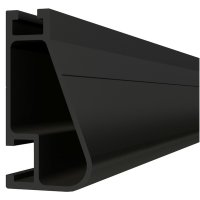
Homeowner Associations (HOAs) have been around since the mid 19th century as a means of managing residential housing developments. The responsibilities of an HOA differ by location and community, however, the majority are tasked with maintaining property values of homes within the association through building and renovation guidelines, landscaping, and the maintenance and operation of common areas and facilities.
The relationship between homeowners seeking to install a solar system, the solar contractor, and the HOA can often be challenging. But this need not be the case! By better understanding the concerns of the Association, a solar contractor can successfully engage homeowners and the HOA board.
Know the Law
The first step towards successfully navigating the solar-HOA relationship is to understand the relevant solar laws and regulations. Nearly two dozen states in the US have solar access laws. These laws override HOA contracts to ensure any interested homeowner can install solar on their roof. Although these laws protect the right of a homeowner to install solar, it would be unwise to forgo engaging the HOA in the project. Even if you are in a state with a solar access law or easement, the HOA may still request that the array is installed in a certain manner (only rear roofs) or with certain equipment (black-framed modules with black backsheets). Keep in mind that although the HOA can make these requests, if their requirements significantly impact the efficiency of the system (shading or northern azimuth) you are well within your rights to petition for a waiver.
A list of states with solar access laws can be found at the end of this article.
Walk in their Shoes
As we already touched on, the ultimate goal of any HOA is to maintain the operations and aesthetics of the community, and in doing so, maintain property values. With this in mind, remember that HOAs are not inherently against solar PV, rather they are concerned about what PV systems could look like and how that could impact the value of homes in the surrounding area. Understanding that aesthetics are of primary concern to many HOAs will help you develop a strategy for successfully opening up a community to solar.
Come Prepared
If you have a solar lead in a community that has no solar installs chances are the HOA will have a very limited understanding of solar energy and PV systems. With this in mind, your success in developing the lead will hinge on the prep work you do for the proposal. Many contractors have found that approaching the HOA directly, prior to signing any contracts, is the best way to get them onboard with a project. Come prepared to address their concerns head on. You might want to lead off with the clean aesthetics your company can offer (a great combination is Canadian Solar black/black monos with black IronRidge racking, no conduit running over an exposed roof and inverters in the garage).
Carolina Energy Conservation, a solar contractor serving Eastern South Carolina, installs many projects on homes managed by HOAs. Operations Manager Fred Baker emphasizes the importance of pre-installation prep and a thorough proposal; “We’ve found that including photos of our past work and site renderings with street views from several angles goes a long way with the HOA.”
While this amount of pre-install work may seem daunting, getting in the good graces of the HOA can unlock an entire community of new leads. If you are developing a project in an HOA that is new to solar you may also consider bringing a copy of any solar access laws or easements that may apply to your location.
Attention to Detail
For most HOAs the core of their concern is the potential for reduced curb appeal caused by a solar system which could impact the value of surrounding homes. Some simple steps can be taken to greatly improve the street view of a solar system. As we already hit on, all black mono modules accompanied with black racking will give the array a clean and consistent look on many homes.
To take this clean look to the next level Carolina Energy Conservation tries to keep arrays square or rectangular with no staggered modules. This could mean slightly less wattage on the roof but goes a long way when it comes to the appearance of the array. Carolina also goes a step further by using roof-mounted pass through boxes to eliminate exposed conduit on the roof. They also install inverters in the garage to keep the sides of a home uncluttered.
Every HOA is different so you will need to adjust your strategy accordingly. The overarching strategy, however, should remain the same, engage the HOA early and often as you develop a project in their community. This work will go a long way to build trust that ultimately results in more projects down the road.
-
California
-
Colorado
-
Florida
-
Hawaii
-
Illinois
-
Indiana
-
Iowa
-
Louisiana
-
Maine
-
Maryland
-
Massachusetts
-
Nevada
-
New Hampshire
-
New Jersey
-
New Mexico
-
North Carolina
-
Oregon
-
Texas
-
Vermont
-
Virginia
-
Washington
-
West Virginia
-
Wisconsin
